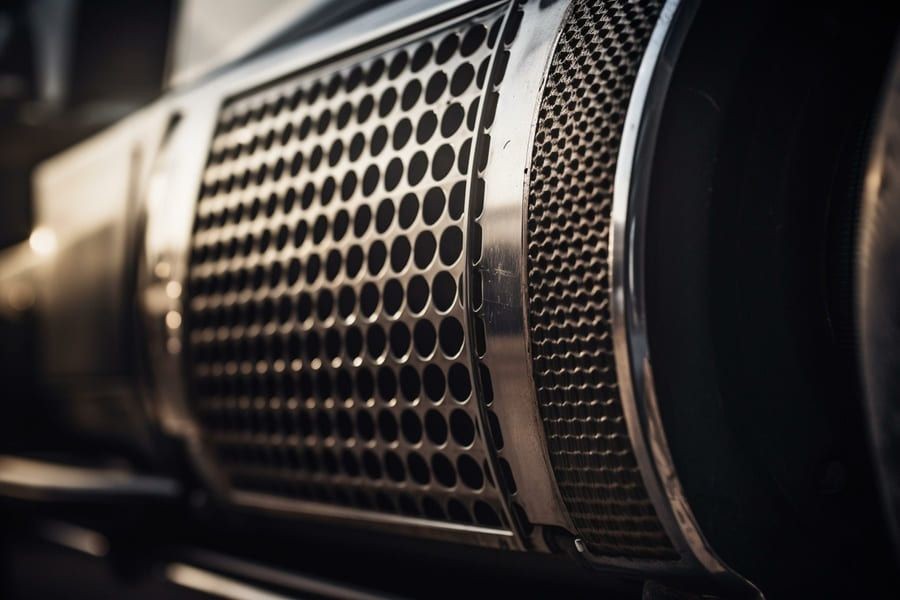Diesel Particulate Filters (DPFs) are essential components in modern diesel vehicles, designed to trap harmful soot particles from exhaust emissions. However, they can sometimes malfunction, leading to a “Dpf System Fault.” This article explores the intricacies of DPF system faults, outlining common symptoms, underlying causes, and effective solutions.
What is a DPF and How Does it Work?
A DPF is a filter located in the exhaust system of a diesel vehicle. It captures soot, a byproduct of diesel combustion, preventing its release into the atmosphere. The DPF periodically undergoes a process called regeneration, where the accumulated soot is burned off at high temperatures, converting it into harmless ash.
There are two types of regeneration:
- Passive Regeneration: Occurs automatically during high-speed driving when exhaust temperatures are naturally high enough to burn off soot.
- Active Regeneration: Initiated by the engine control unit (ECU) when soot levels reach a certain threshold. The ECU adjusts engine parameters to increase exhaust temperatures, facilitating soot combustion. This often happens during prolonged idling or city driving.
Recognizing DPF System Fault Symptoms
A DPF system fault can manifest in various ways. Recognizing these symptoms is crucial for early diagnosis and preventing further damage. Common indicators include:
- DPF Warning Light: An illuminated DPF warning light on the dashboard is the most obvious sign of a potential problem.
- Reduced Engine Power (Limp Mode): The ECU might limit engine power to protect the engine and DPF from further damage.
- Increased Idle Speed: The engine might idle at a higher RPM than usual during active regeneration.
- Poor Fuel Economy: Active regeneration consumes extra fuel, leading to a noticeable decrease in fuel efficiency.
- Black Smoke from Exhaust: Excessive black smoke during acceleration can signal a blocked DPF.
- Unusual Odors: A strong smell of diesel fuel inside the cabin might indicate a DPF issue.
- Difficulty Starting: A severely clogged DPF can hinder engine starting.
- Start-Stop System Malfunction: The engine’s start-stop system might become disabled due to the DPF fault.
Causes of DPF System Faults
Several factors can contribute to DPF system faults. Understanding these causes can help prevent future issues:
- Frequent Short Journeys: Consistent short trips prevent passive regeneration, leading to soot buildup.
- Incorrect Engine Oil: Using oil not specifically formulated for DPF-equipped vehicles can contribute to excessive soot formation.
- Faulty Sensors: Malfunctioning sensors can provide inaccurate data to the ECU, hindering proper DPF regeneration.
- Other Engine Problems: Issues like faulty fuel injectors or a malfunctioning EGR valve can increase soot production.
Solutions for DPF System Faults
Addressing a DPF system fault requires prompt action. Here are some potential solutions:
- Forced Regeneration: A garage can initiate a forced regeneration using diagnostic equipment.
- DPF Cleaning: Professional DPF cleaning can remove stubborn soot buildup.
- DPF Replacement: In cases of severe damage, DPF replacement might be necessary.
- Addressing Underlying Issues: Fixing any contributing engine problems is crucial to prevent recurring DPF issues.
Preventing DPF System Faults
Prevention is always better than cure. Here’s how to minimize the risk of DPF problems:
- Regular Long Drives: Incorporate regular high-speed driving to allow for passive regeneration.
- Use Correct Engine Oil: Always use low SAPS (Sulphated Ash, Phosphorus, and Sulphur) oil formulated for diesel vehicles with DPFs.
- Timely Maintenance: Address any engine issues promptly to prevent increased soot production.
Conclusion
Understanding DPF system faults is essential for any diesel vehicle owner. By recognizing the symptoms, understanding the causes, and implementing preventive measures, you can ensure the longevity and efficiency of your DPF, minimizing costly repairs and reducing harmful emissions. If you suspect a DPF system fault, consult a qualified mechanic for diagnosis and repair.

